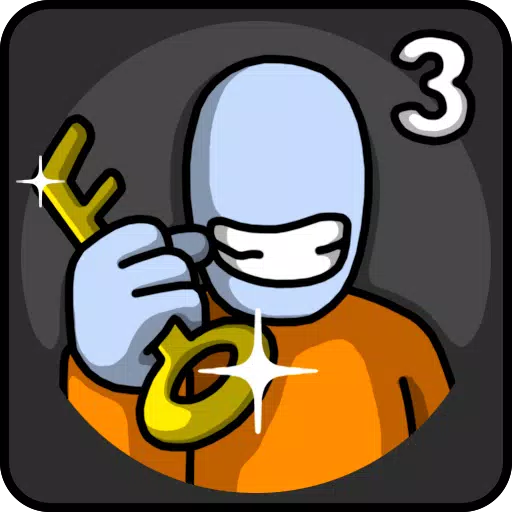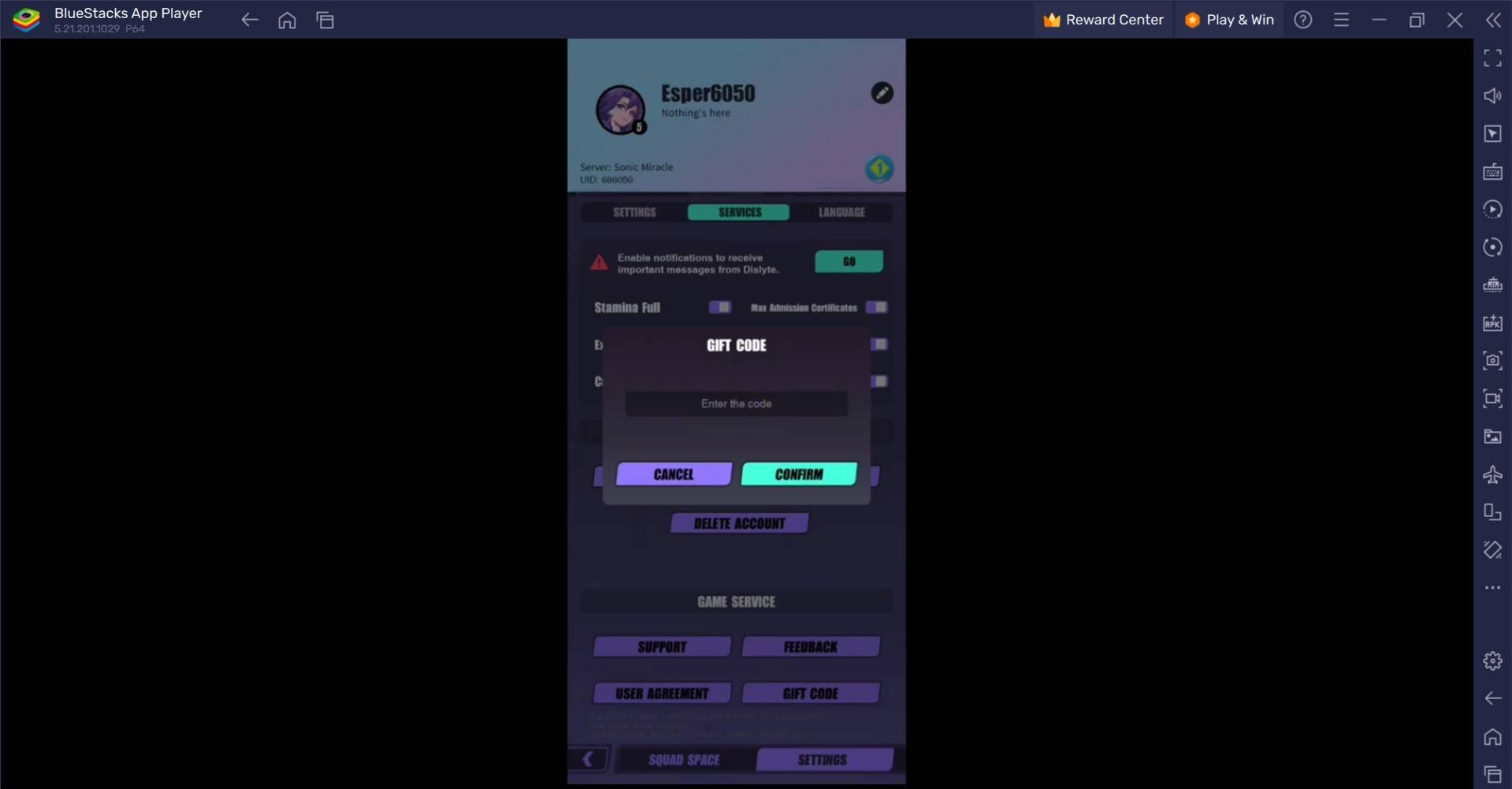When I sat down to play developer MercurySteam's latest project, Blades of Fire, I expected something reminiscent of the studio's Castlevania: Lords of Shadow games, but updated with the modern stylings of God of War. An hour later, I felt as though I was playing a Soulslike, with the twist that all the stats were embedded in my weapons rather than an RPG character sheet. By the end of the three-hour hands-on session, I realized that both of these observations were simultaneously true and false: this game is built on well-trodden ground, yet the unique arrangement of borrowed components and fresh ideas creates a fresh and compelling take on the action-adventure genre.
While it's not a direct clone of Sony Santa Monica's work, it's easy to see the similarities at first glance. Blades of Fire features a dark fantasy world, heavy-hitting strikes, and a third-person camera that stays close to the action, much like the Norse era of Kratos' journey. There are even more parallels: during the demo's opening hours, I explored a twisty, treasure-laden map with a young companion who helped solve puzzles. Together, we sought out a woman of the wilds who lived in a house mounted atop a giant creature. It can sometimes feel a bit too familiar, especially when you consider the many elements borrowed from FromSoftware's library, including anvil-shaped checkpoints that refill your limited health potions and respawn enemies when rested at.

This familiarity is presented through a world that evokes 1980s fantasy. You can easily imagine Conan the Barbarian fitting in among its buff soldiers, while a group of orangutan-like enemies bouncing on bamboo pogo sticks wouldn't look out of place in Jim Henson's Labyrinth. The story itself has a retro feel; an evil queen has turned steel into stone, and it's up to you – Aran de Lira, a blacksmith demigod – to kill her and restore the world's metal. Despite these old-school charms, I'm skeptical about the story, characters, and writing being compelling at this stage – it feels very video game-y, reminiscent of the often forgotten narratives from the Xbox 360 era.
Like many of those classic games, Blades of Fire's strongest features are its mechanics. The combat system is rooted in directional attacks, utilizing every face button on the controller. On a PlayStation pad, tapping triangle targets the head, cross goes for the torso, while square and circle swipe left and right. By carefully reading an enemy's stance, you can use these attacks to break through defenses. For instance, a soldier holding a blade to protect their face can be overcome by aiming low and skewering their gut, resulting in wonderfully squelchy impacts with thick trails of blood erupting from the wounds.
There are moments when this system truly excels. The demo's first major boss, a slobbering troll, had a second health bar that could only be chipped away after dismembering the beast. The limb you lop off is determined by your angle of attack, so I could use my right-hand strike to detach its club-swinging left arm, effectively disarming my foe. Even better: you can cut the troll's entire face off, leaving it blind and aimlessly flailing until it can regrow its eyes and continue the fight.
Compared to most games, your weapons require significant attention. "Interesting wrinkles like this can be found in many of the combat staples. Your stamina gauge, which fuels attacks and dodges, doesn't automatically regenerate; instead, you must manually restore it by holding the block button. Despite these new ideas giving Blades of Fire's combat a distinct edge, the overall feel of battle remains undeniably Soulsian. Attack pattern recognition and slender dodge/block/parry windows are key, with the same sense of risk and reward – though the punishment isn't as severe. It's enough to trigger FromSoft muscle memory, but that won't help you here: the directional attack system demands a different control map, with blocking repositioned to the left trigger.
Once I rewired my brain to remember that none of the face buttons could be used to dodge, the system started to click. The unique approaches gradually overshadowed the Soulslike elements, and I found the combat to be refreshingly different. Core damage dealing is enhanced by a smart weapon system that allows you to wield your bladed armaments with different stances, either slashing with the sharp edge or thrusting with the pointed tip. As with the directional system, you'll need to assess your enemy and use HUD prompts to determine which method is most effective.
Blades of Fire Screenshots
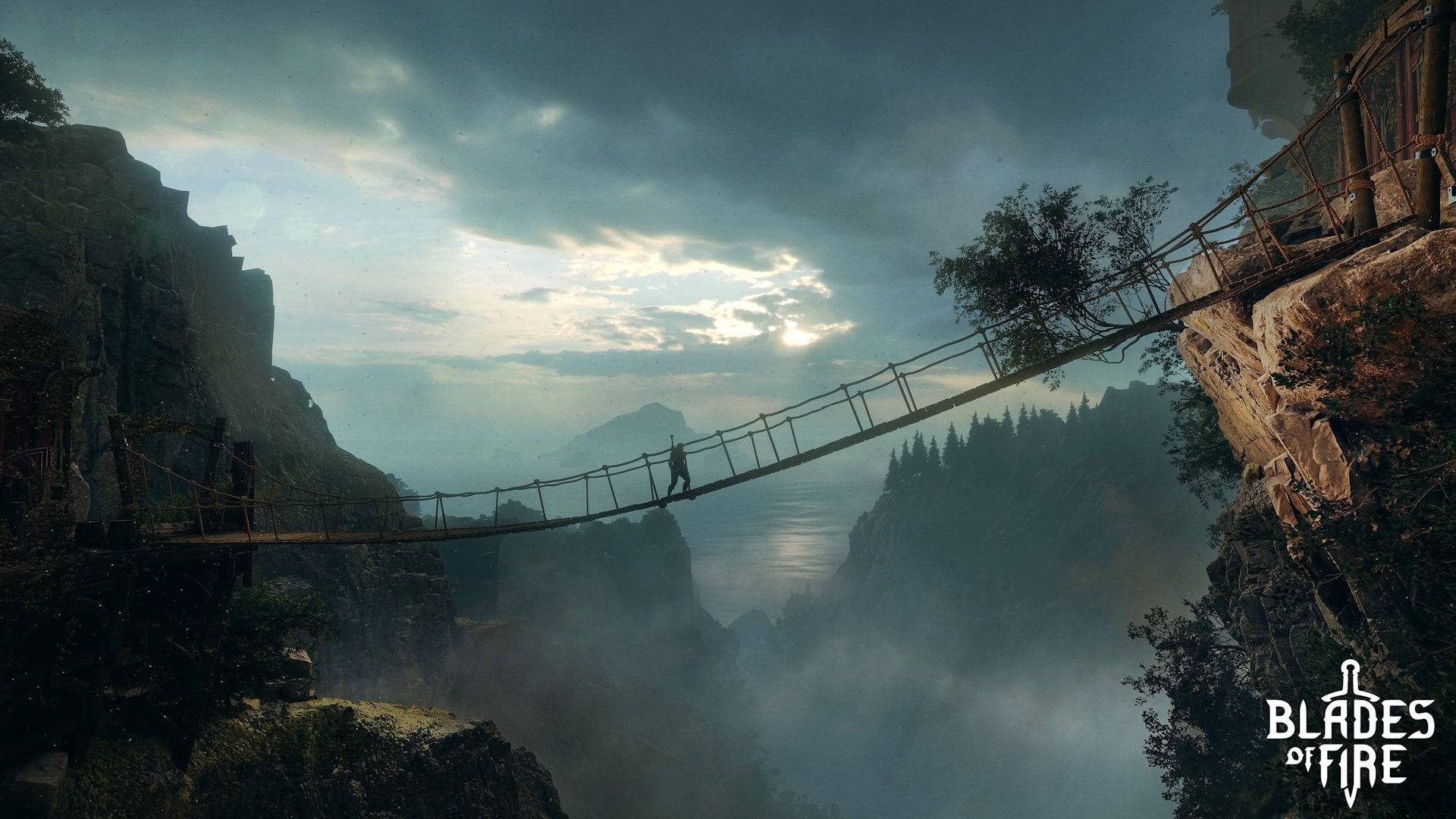
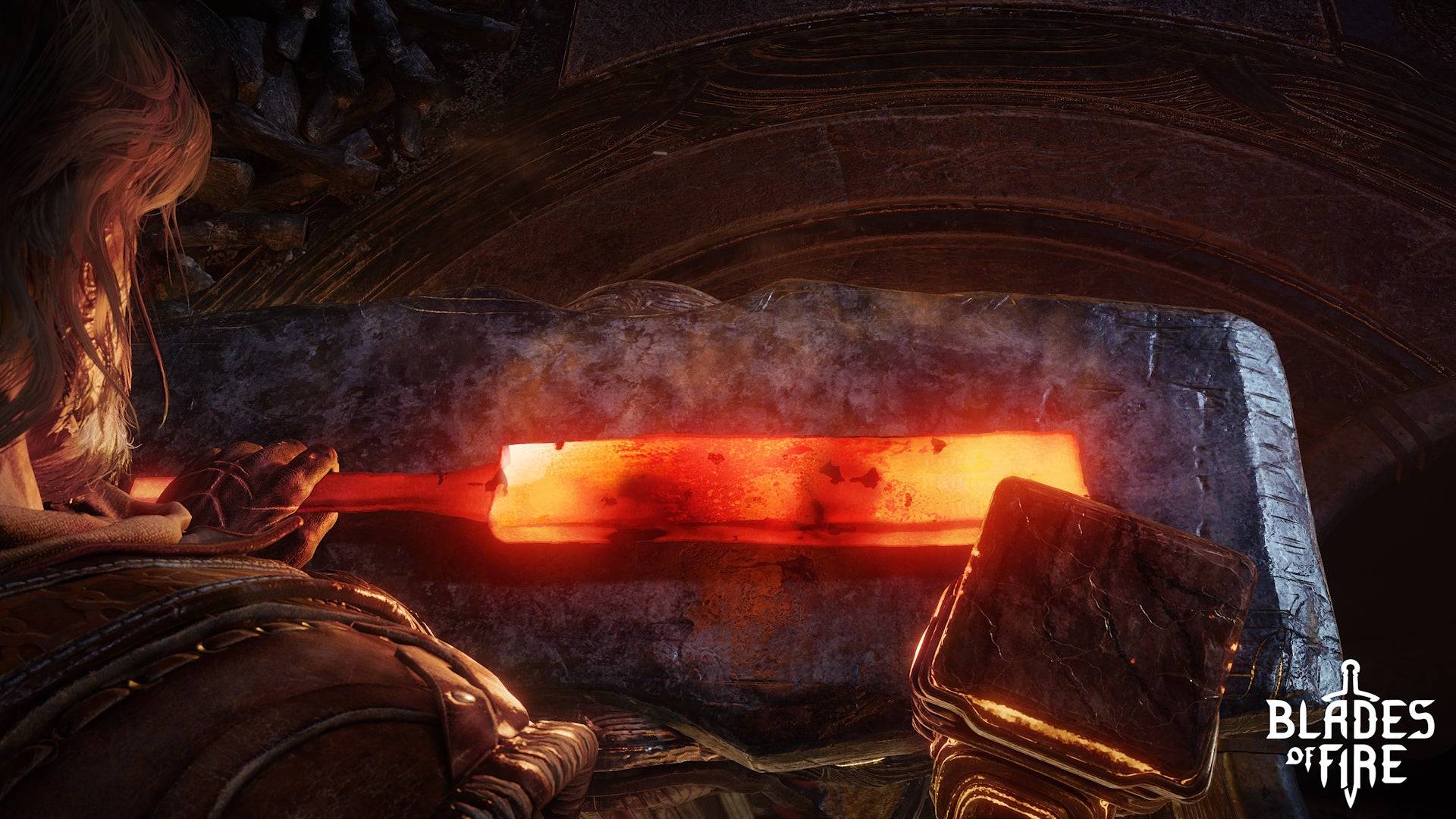 9 Images
9 Images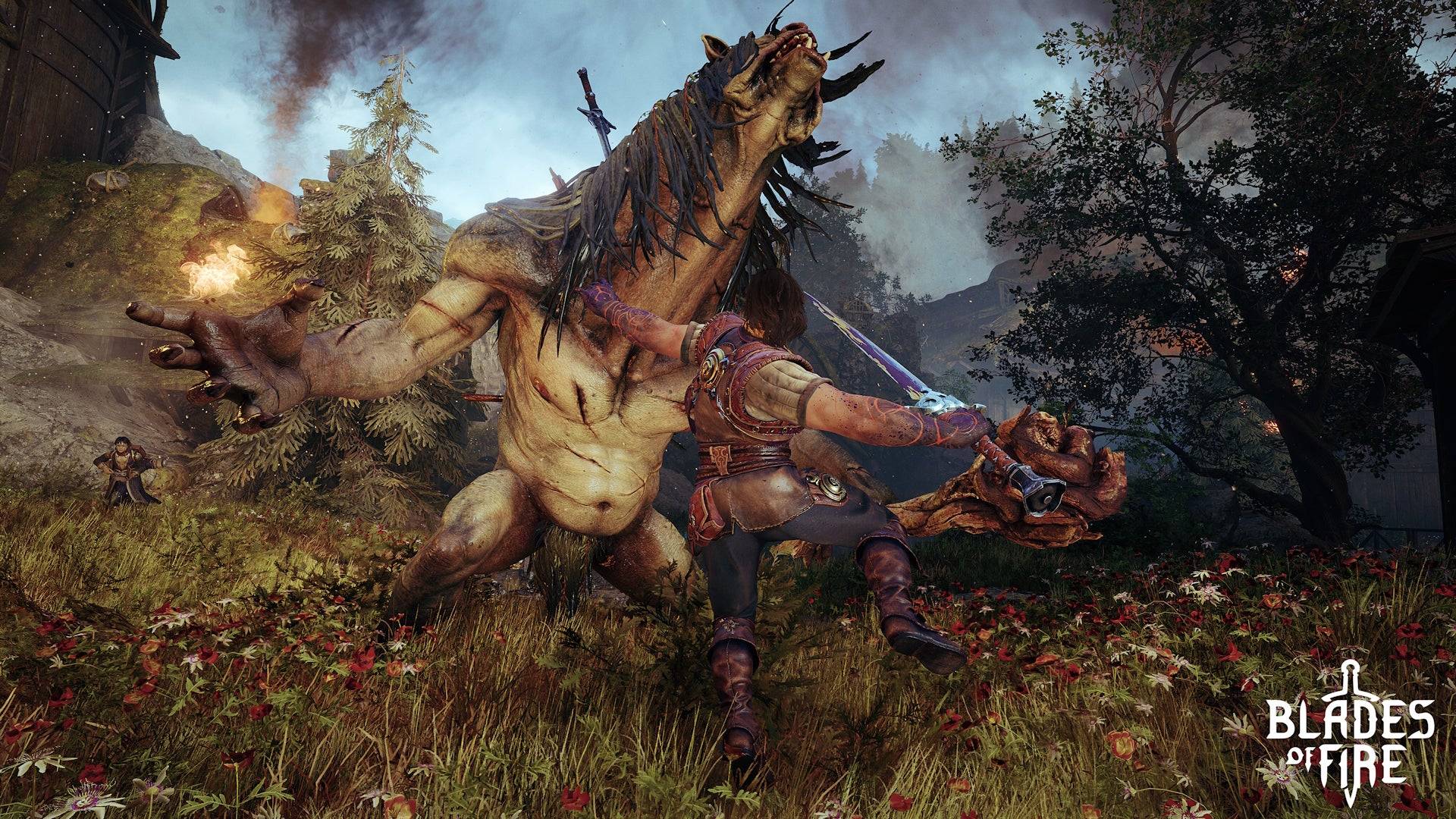
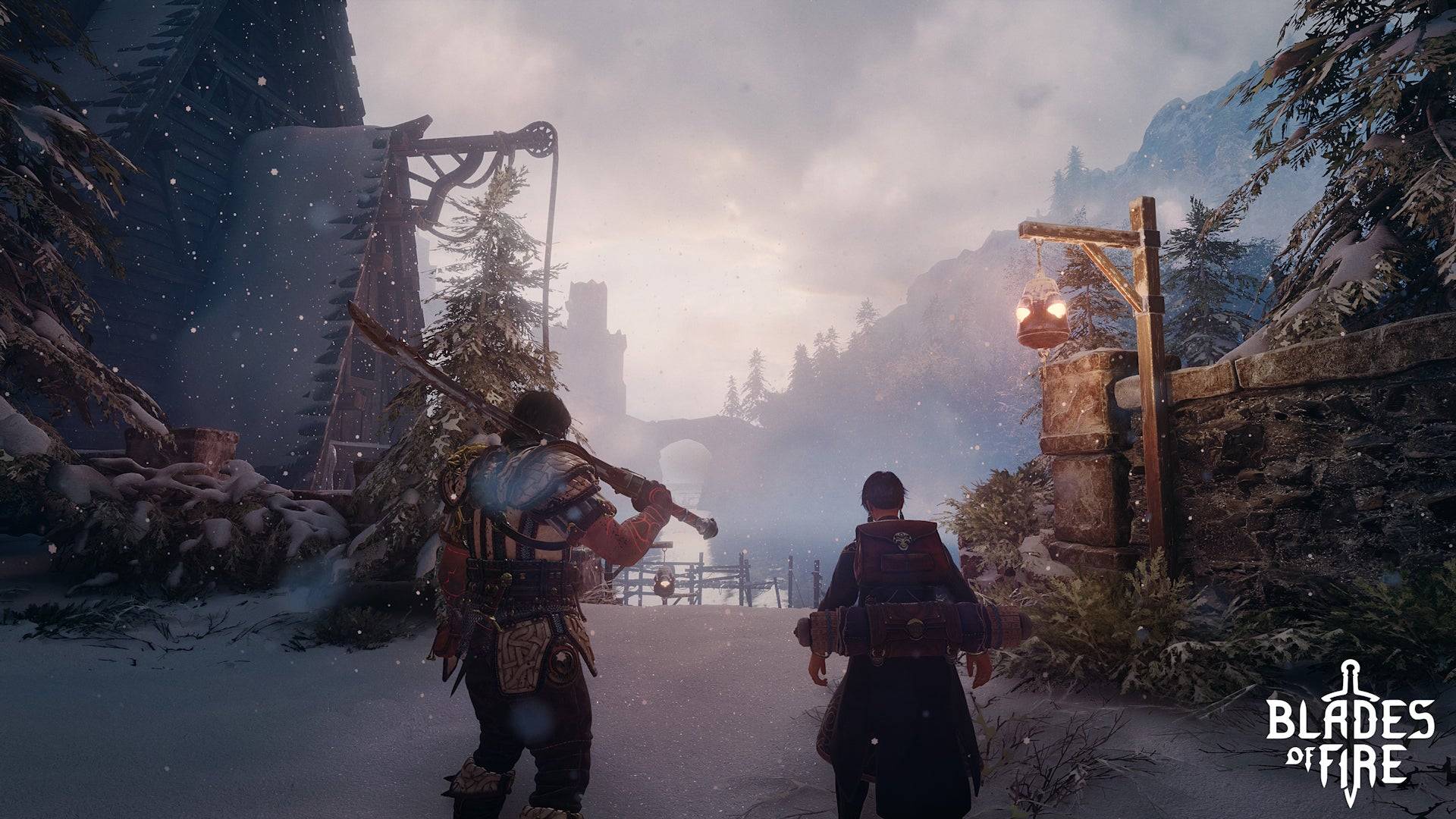

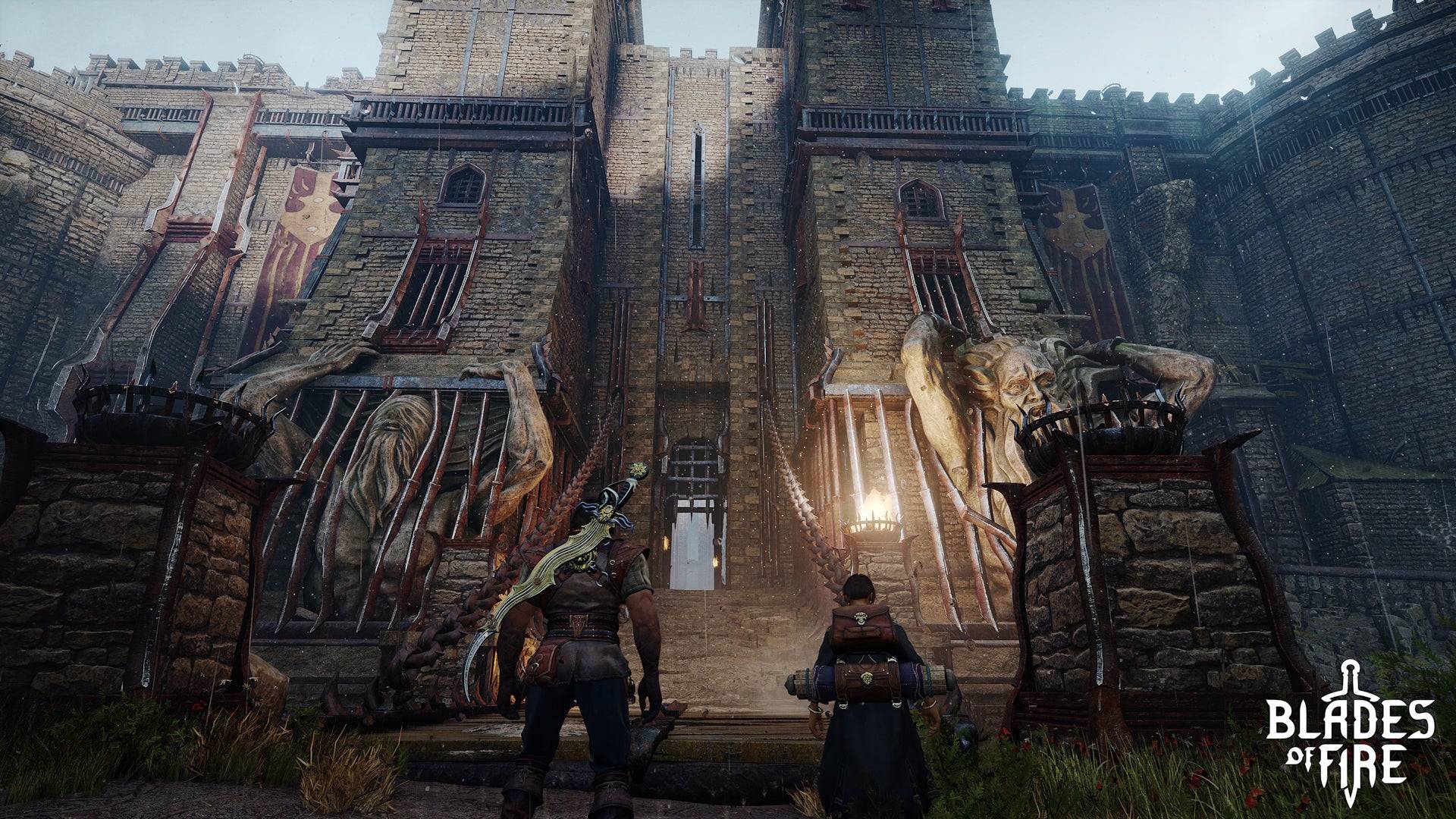
If the title didn't give it away, weapons are central to Blades of Fire. Compared to most games, they demand a huge amount of attention. Edged weapons dull with repeated use, meaning each successive strike deals slightly less damage. Over time, this can add up, so you'll need to use a sharpening stone to replenish your weapon's blade or switch to a different stance, as the edge and tip wear down independently, adding to the sense that these are tangible items affected by your fighting style.
As with Monster Hunter, you'll learn to make space to sharpen your sword mid-fight. However, every weapon has a durability meter that continually depletes, regardless of how well you maintain it. When your weapon inevitably shatters, you can repair it at an anvil checkpoint or melt it down into its raw materials to start crafting anew, which is undoubtedly Blades of Fire's most significant and distinguishing innovation: the forge.
To say MercurySteam has created an extensive weapon crafting system is an understatement. Rather than finding new armaments in the world, every weapon's life begins at the forge. It starts with choosing a basic weapon template, which Aran sketches out on a chalkboard. From here, you tweak and modify. For instance, when designing a spear, I adjusted both the length of the pole and the shape of the spearhead. Each decision affects the weapon's stats; a longer pole increases the spear's range, while the shape of the head determines if it's better at slashing or piercing. Different materials affect weight, which in turn changes the weapon's demands on your stamina pool. All this lends the sense that you are genuinely crafting your weapon. You even get to name your creation.
Most crafting systems would end there, but in Blades of Fire, this is only the halfway point. With your design complete, you must physically hammer out the metal on an anvil. This is achieved via a detailed minigame where you control the length, force, and angle of every hammer strike. A curved line on the screen represents the ideal shape, and with each blow, you attempt to arrange a series of vertical bars to match the curve. Overworking the steel results in a weaker weapon, so the aim is to recreate that line in as few strikes as possible. Your efforts are rewarded with a star rating; the more stars you attain, the more often you can repair your creation before it permanently breaks and is lost forever.
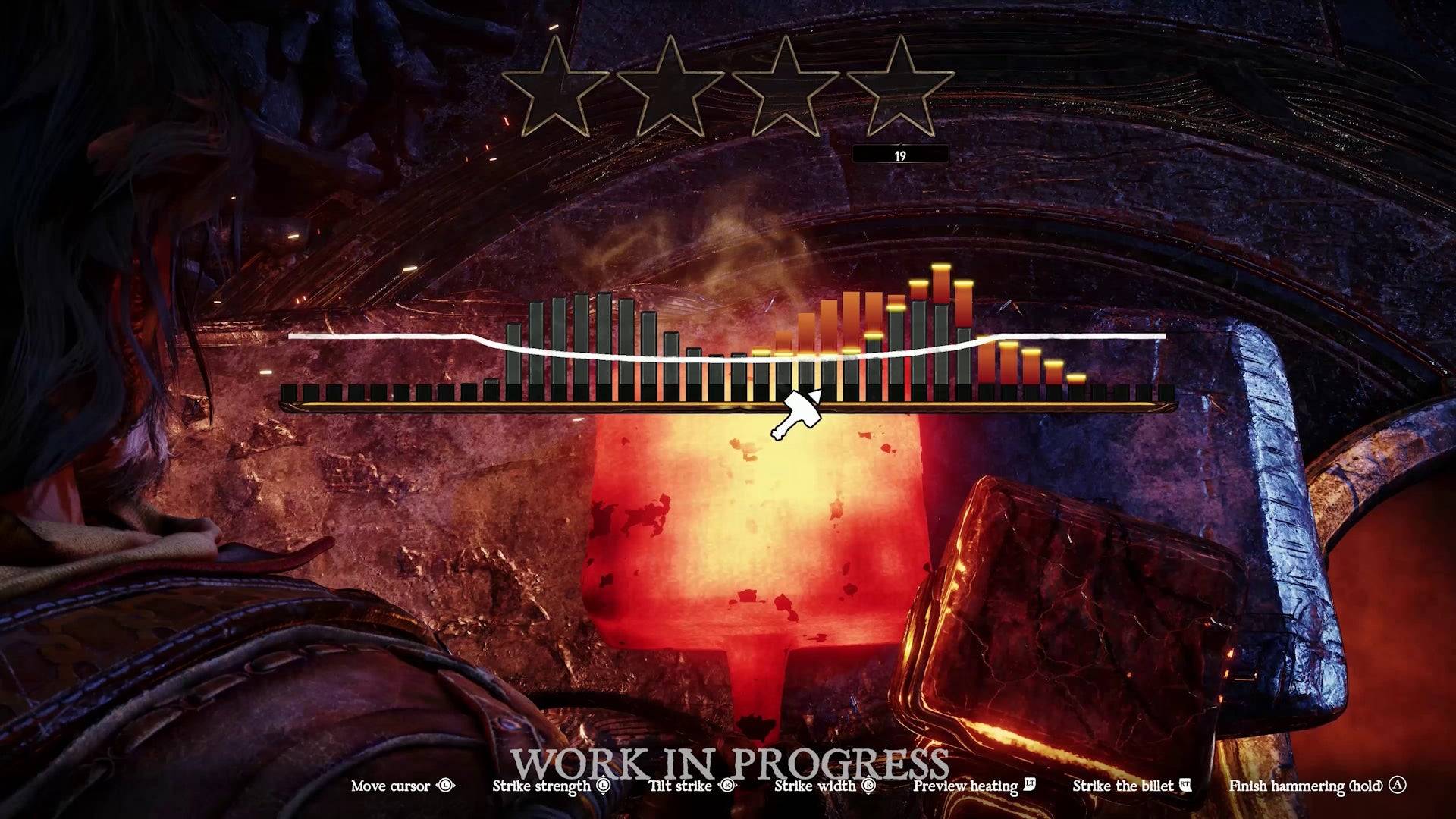
I really appreciate the idea of the forge and how it introduces a skill element to what is typically a menu-driven system. However, even after several sessions at the anvil, I found the minigame frustratingly obtuse. There didn't seem to be a clear connection between the areas I struck and the resulting shape of the metal. Hopefully, some improvements, or at least a better tutorial, will be implemented before launch – it would be a shame for Blades of Fire's most interesting feature to be marred by irritation.
The concept at the heart of the forge goes beyond the boundaries of a three-hour demo. MercurySteam wants you to feel deeply attached to the weapons you create and carry them throughout your journey – a journey the developer claims will last "no less than 60-70 hours." As you explore the world and find new metals, you'll be able to reforge your trusted swords, axes, hammers, and spears to enhance their properties, ensuring they're always suitable for new and more difficult challenges. This bond between you and your armaments is emphasized by the death system; upon defeat, you drop the weapon you were using and respawn without it.
AnswerSee ResultsIt's another mechanic inspired by Dark Souls, but built on a different, arguably more meaningful bond: lost souls can always be replenished with more killing, but a brilliant sword you've built a connection with is irreplaceable. Fortunately, your dropped weapons will remain in the world permanently, so your challenge is to find a way to recover what you lost. I look forward to seeing how this plays out over the entire campaign, and if any kind of backtracking will reunite you with weapons from a dozen hours ago that you can reforge and rekindle your relationship with.
It's no surprise to see MercurySteam adopting multiple ideas from Dark Souls and its siblings. This is partly due to FromSoftware's seemingly irreversible impact on action games, but also because Blades of Fire is something of a spiritual successor to Blade of Darkness: a relic of the early 2000s, it was developed by MercurySteam's founding members and is considered (by its cult following, at least) to be a precursor to the Souls series. In many ways, those developers are simply picking up from where they left off, implementing the advancements made by other studios during their time away from the genre.

As I played, I could feel the gravitational pull of all of MercurySteam's apparent influences – the brutal combat of this project's decades-old predecessor, the innovations of FromSoft, and the world design of God of War. Yet, these ideas don't fully define the studio's latest work. Rather than crafting a Soulslike or a God of War-like, these established systems have been reinterpreted as part of a larger canvas of ideas. Blades of Fire has its own recipe that successfully distances it from any of its obvious gaming touchstones.
I do have some concerns – I'm unsure if this fairly generic dark fantasy world can support a 60-hour adventure, and within three hours, I'd fought the same gatekeeping miniboss three times, which makes me question the variety on offer. However, the demonstrated depth of relationship between your forged blades and the foes you face has me totally intrigued. In a time when complex and, frankly, obtuse games like Elden Ring and Monster Hunter have become mainstream hits, I believe Blades of Fire has the potential to contribute something fascinating to the scene.
 Home
Home  Navigation
Navigation






 Latest Articles
Latest Articles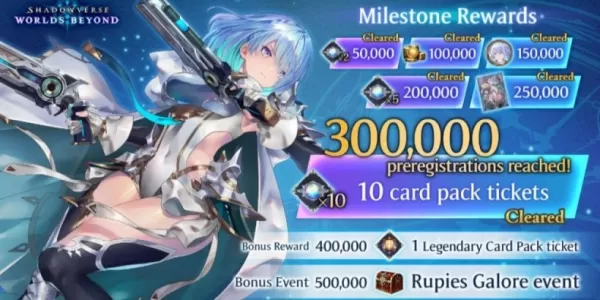









 Latest Games
Latest Games



